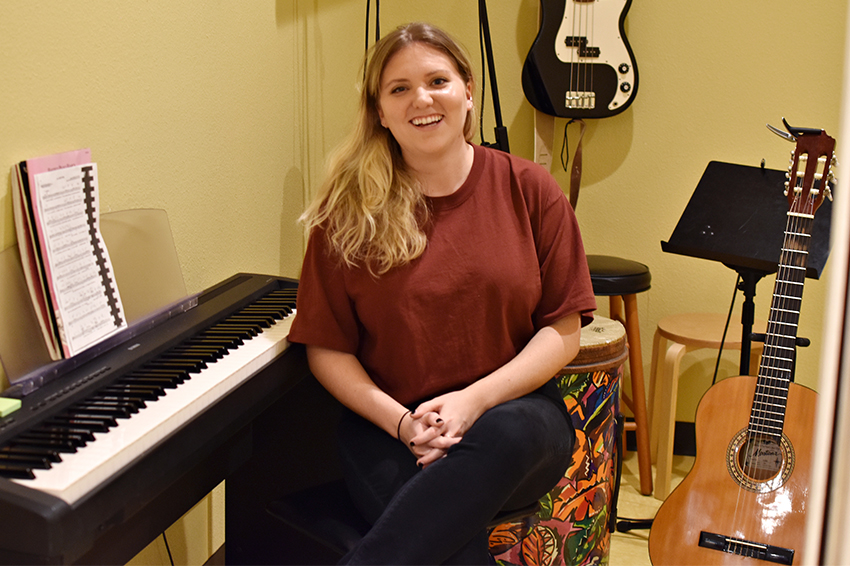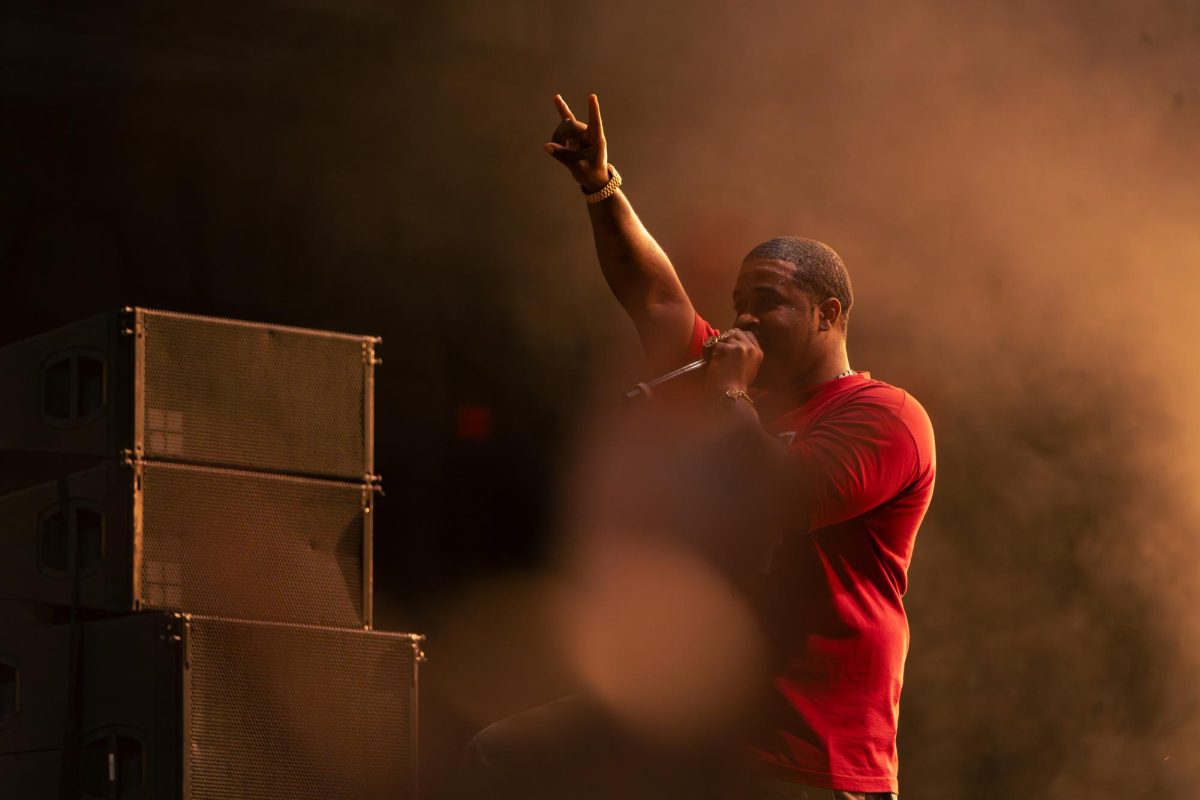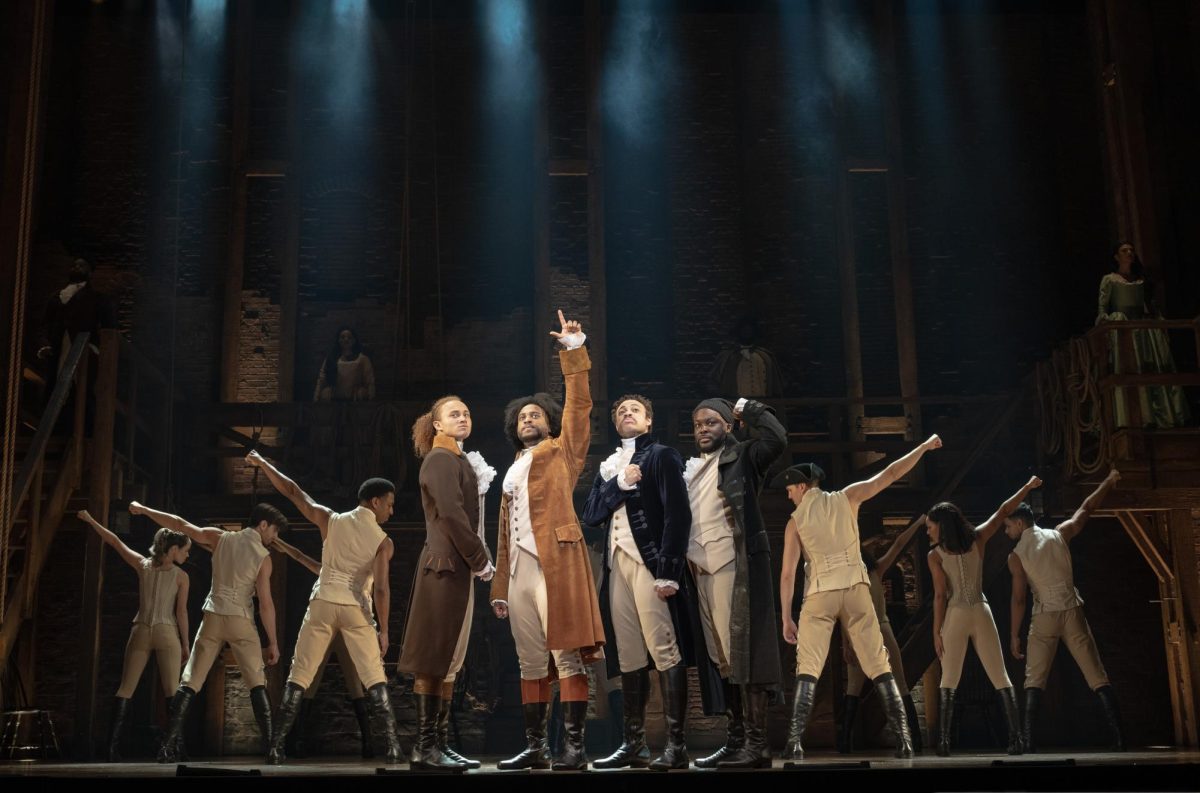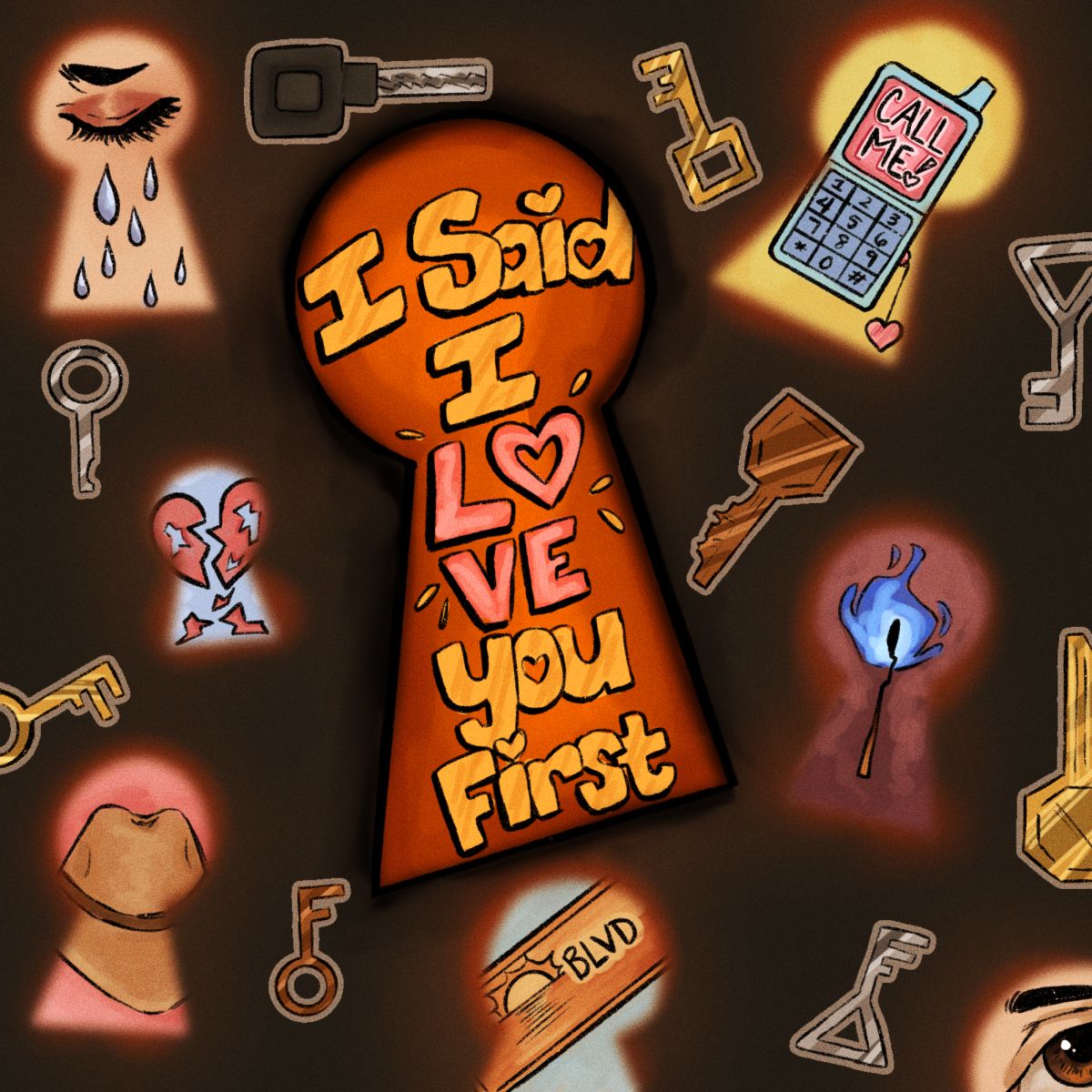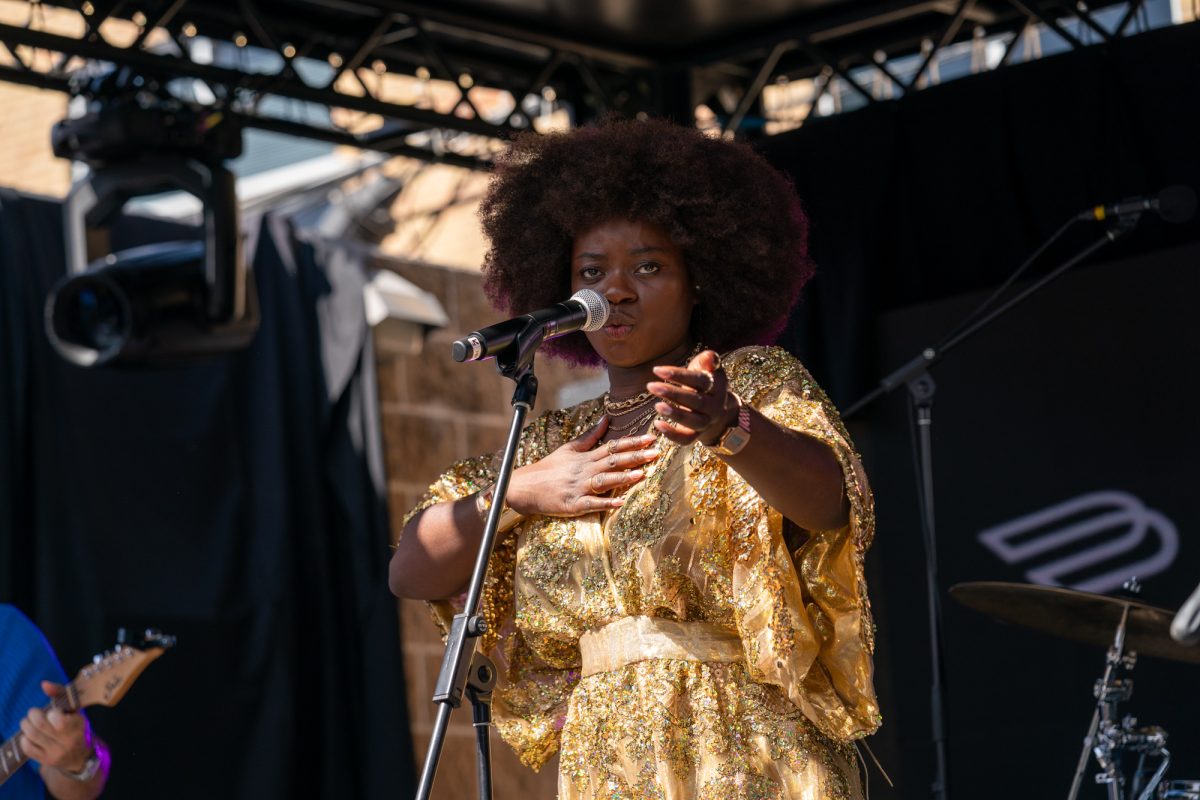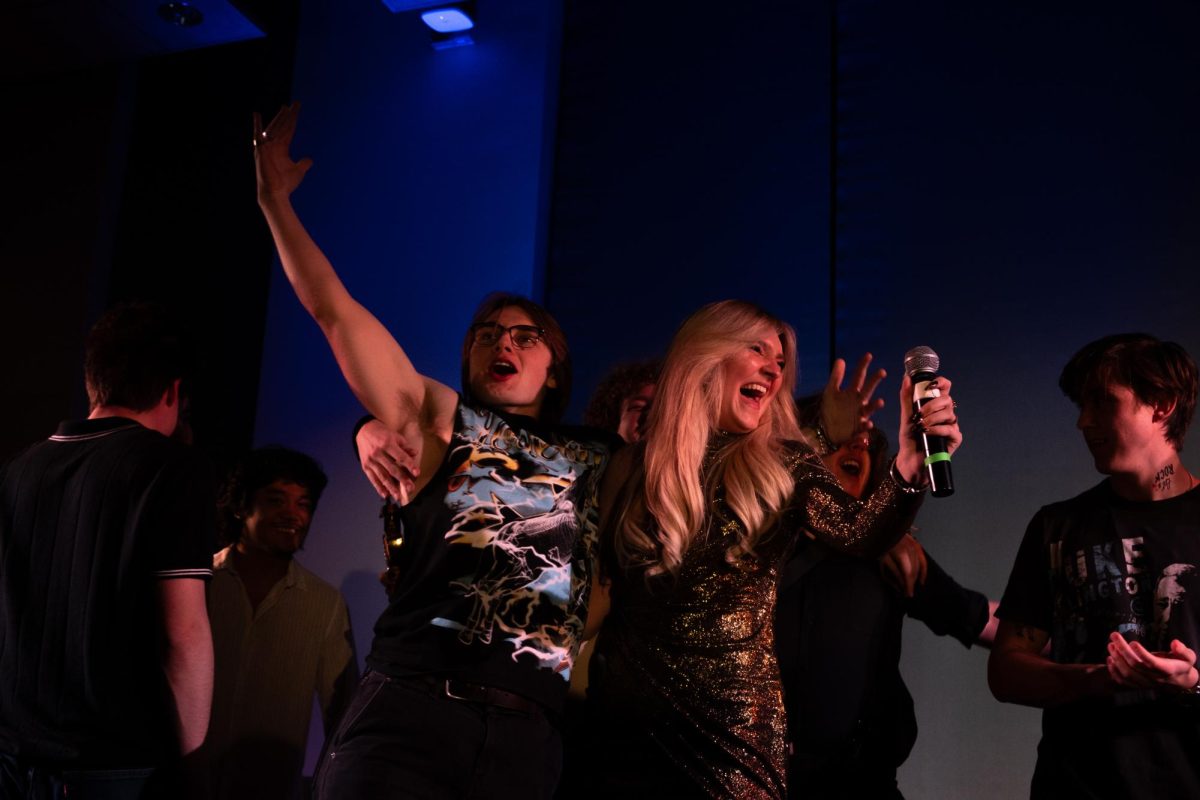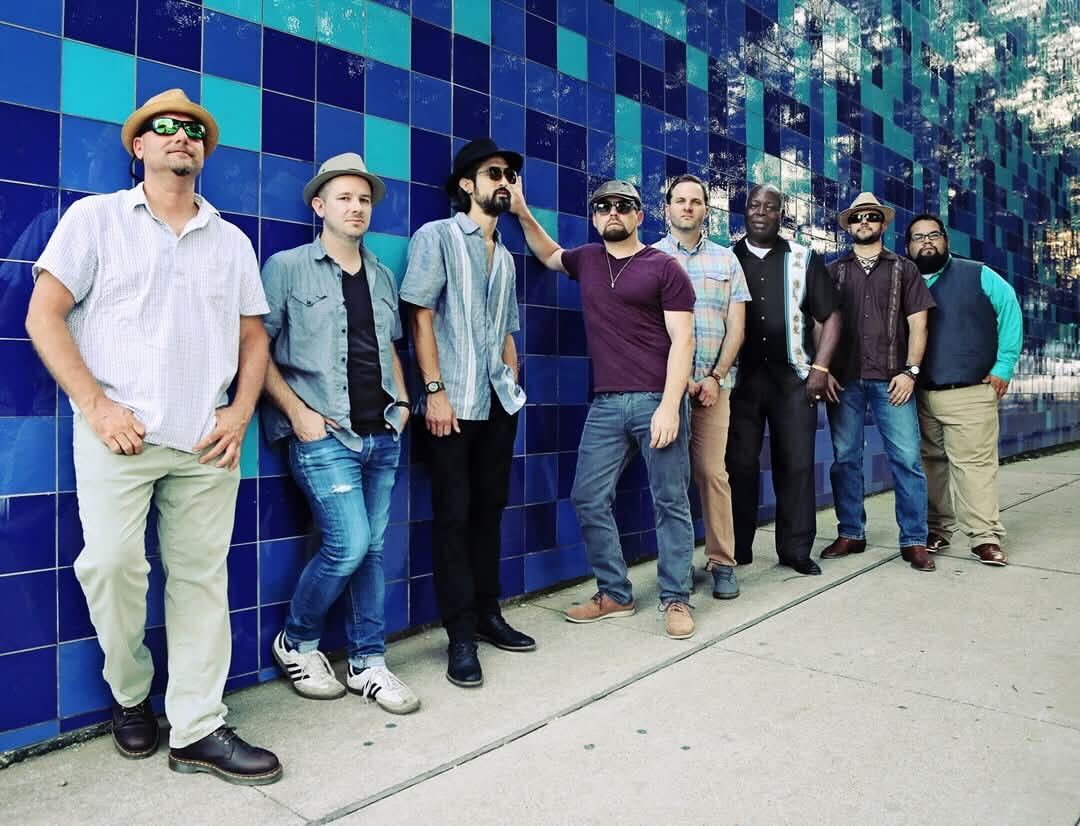Relearning to walk takes a toll on people with movement disorders or brain injuries, but Austin’s Center for Music Therapy believes music can ease a patient’s journey to getting back on their feet.
To help their patients learn to walk again, the Center developed the Movements Tracks Project. This effort combines new technology to track, record and use music as a tool in the Center’s patients’ physical therapy. Cassie Shankman, lead composer and UT arts in music composition graduate, makes original and customized music for each patient to move at their own pace.
Shankman said the project gave her the opportunity to compose music and collaborate with medical professionals in ways she couldn’t in other fields. She said music can help individuals live through difficult times, such as when she had to cope with her mother’s death 10 years ago.
“Being in the hospital all the time — doctors understand that it’s hard,” Shankman said. “But music is beautiful, and everyone can relate to music no matter what.”
Shankman’s colleague and lead music therapist Emily Morris explained that music therapy sessions have a physical effect on the body as well as an emotional one by reactivating gait patterns, or the pathways the brain makes to process and use information it receives.
“Music isn’t just to feel good, ease anxiety or help depression — it has the capability to rewire the brain on a scientific level,” Morris said. “If you were wearing heels and if I were walking next to you and I hear the click, click, click — if I have a normal gait pattern I would move along with the clicks.”
The Center’s patent-pending biomedical technology tracks specific rhythms and patients’ responses to each individual musical piece. Although the technology isn’t completely ironed out, it’s tested with every patient. Shankman said she hopes it will one day help other people no matter their location or resources.
Morris said because our brains are rhythmically intrinsic, music therapy can become a crucial part to a patient’s recovery. She said music therapy is typically done in group sessions, but this project differs in that the music is made specifically for the patient and their own problems with movement to narrow in on each individual’s personal connection to rhythm.
“By giving them very clear rhythmic beats through music, you’re giving the brain different things to cling to in order to help recreate those gait patterns that have been damaged by their disease or brain injury,” Morris said.
Morris said the project is important because it not only gives patients more options and resources of treatment, but the results it produces can be a useful tool for music therapists in the future.
“There are only about 6,000 board certified musical therapists in the U.S., but there are millions of people with Parkinson’s,” Morris said. “We just want patients to be able to have options when it comes to treatment.

